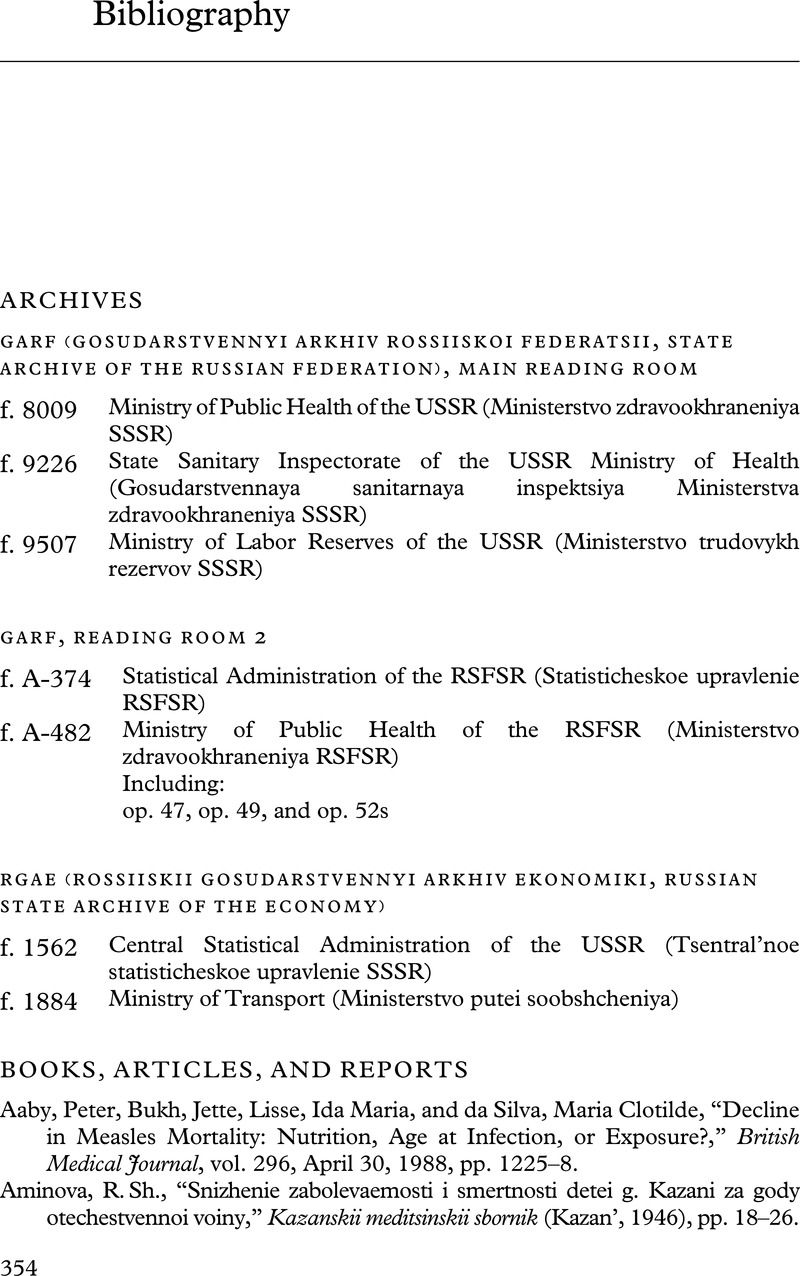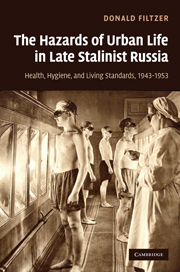Book contents
- Frontmatter
- Contents
- List of figures
- List of maps
- List of tables
- Preface and acknowledgements
- List of terms and abbreviations
- 1 Map of the regions covered in the book, from Moscow in the west to Kemerovo oblast' in Western Siberia
- 2 The Volga and Kama River networks
- 3 Moscow and Moscow oblast'
- 4 The Urals and its major rivers
- The Kuzbass and the River Tom'
- Introduction
- 1 The impossible task: keeping cities clean
- 2 Water
- 3 Personal hygiene and epidemic control
- 4 Diet and nutrition: the 1947 food crisis and its aftermath
- 5 Infant mortality
- Conclusion
- Bibliography
- Index
- References
Bibliography
Published online by Cambridge University Press: 06 July 2010
- Frontmatter
- Contents
- List of figures
- List of maps
- List of tables
- Preface and acknowledgements
- List of terms and abbreviations
- 1 Map of the regions covered in the book, from Moscow in the west to Kemerovo oblast' in Western Siberia
- 2 The Volga and Kama River networks
- 3 Moscow and Moscow oblast'
- 4 The Urals and its major rivers
- The Kuzbass and the River Tom'
- Introduction
- 1 The impossible task: keeping cities clean
- 2 Water
- 3 Personal hygiene and epidemic control
- 4 Diet and nutrition: the 1947 food crisis and its aftermath
- 5 Infant mortality
- Conclusion
- Bibliography
- Index
- References
Summary

- Type
- Chapter
- Information
- The Hazards of Urban Life in Late Stalinist RussiaHealth, Hygiene, and Living Standards, 1943–1953, pp. 354 - 365Publisher: Cambridge University PressPrint publication year: 2010



